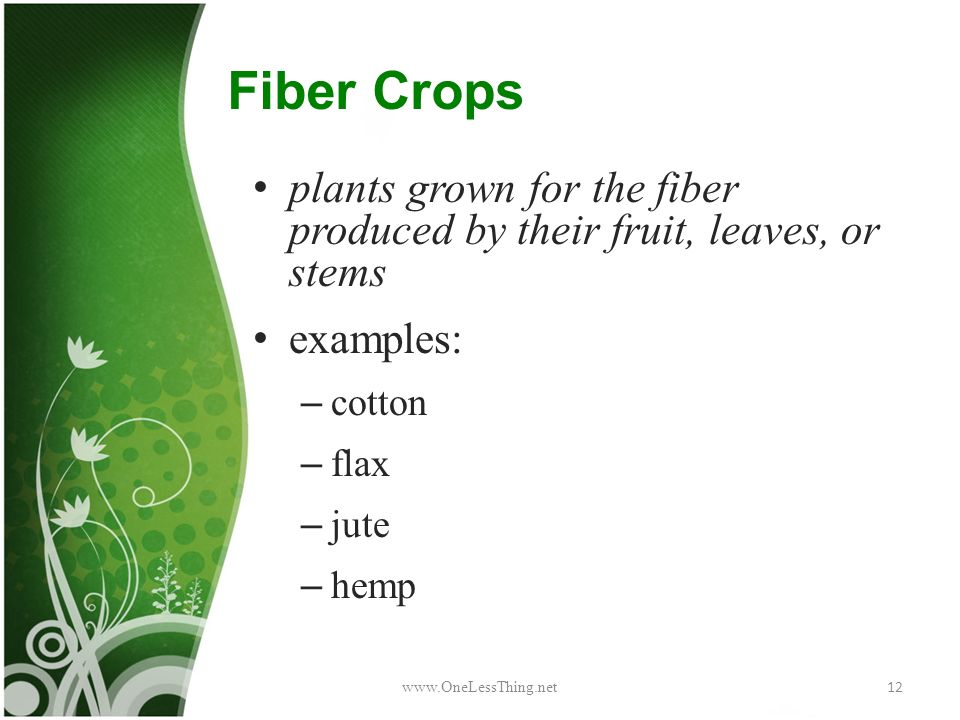Fiber plants were among the first cultivated plants in prehistoric times.
The number of commercially grown fiber crops is small and these are mostly of ancient origin in the tropics.
The tropics supply the bulk of the world’s fiber requirements.
Despite the competition from the development of the synthetic fiber industry, plant fiber has retained its dominant role.
What is Fibre?
The word has many meanings, depending on the particular sense in which it is used.
- Botany
- Contents
Botanically, fibers consist of very long narrow cells, many times longer than they are broad.
They are invariably quite thick-walled having a corresponding small lumen.
Fiber cells are nonliving structures when mature and serve a purely mechanical function, that is, the impact strength and rigidity to the plant body.
Chemically, vegetable fiber is mainly composed of cellulose (64-94%) which makes up the structural framework of the cell wall.
The cell walls may also contain an appreciable proportion of lignin, hemicellulose, pectic substances, resin, mineral materials, fats, and waxes.
Categories of Vegetable Fibre
Vegetable fiber can be classified into three types according to their botanical origin as follows
Surface Fibres which are associated with the fruits and seeds of plants are either carried on the seed coat itself or produced by the ovary wall as protection for the developing seeds.
The most important of the commercial fibers, cotton, belongs to this group.
Stem, Phloem, Soft, or Bast fibers are found associated with the phloem, pericycle, and cortex of the stem of certain plants.
The fibers arise either from the cambium or from the apical meristem, made up of elongated cells often with tapering ends, with cellulose walls that vary in the amount of lignification laid down on them.
Fibers of this category are derived mostly from dicotyledonous plants.
They are usually separated by retting- a process in which fibers are freed from other stem tissues through microbial activity.
The best-known plants in this group are jute, kenaf, flax, hemp, and roselle.
Leaf, structural or hard fibers are strands of small, short, lignified cells ensheathing both the xylem and phloem (fibrovascular bundle) and are primarily found scattered in the leaves of monocotyledonous plants.
The fibers are highly lignified, and coarser but weaker than the soft fibers in which cellulose is largely associated with peptic materials.
Retting, if done, would render the small cells practically useless. Such fibers are therefore usually separated by mechanical scraping.
The important fibers of this group are sisal, Manila hemp, and new Zealand hemp.
The quantitatively dominant role of plant fibers is based partly on their low price compared to animal and some synthetic fibers, as well as on their technical characteristics.
Cotton provides 78% of world plant fibers while Jute and Kenaf provide about 2%.
The two fibers produced in the temperate zone, flax, and hemp provide 3% and 1% respectively.








